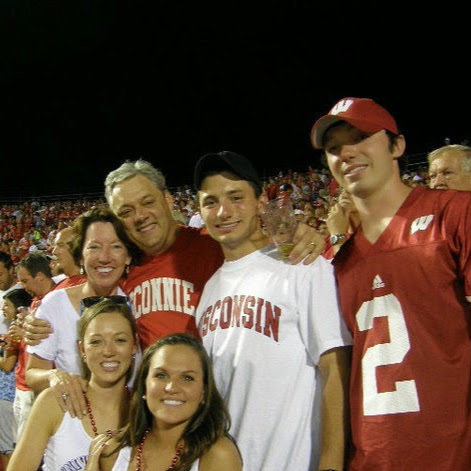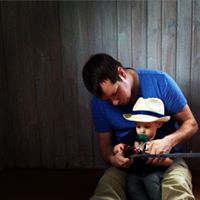Nicholas S Larson
age ~33
from Folsom, CA
- Also known as:
-
- Nicholas Scott Larson
- Nichalas Larson
Nicholas Larson Phones & Addresses
- Folsom, CA
- Redwood City, CA
- Playa Vista, CA
- Redmond, WA
- Bellevue, WA
- Minneapolis, MN
- Red Wing, MN
- Menlo Park, CA
Resumes

Attorney
view sourcePosition:
Attorney at Murphy, Pearson, Bradley & Feeney, Co-Chair of Barristers Pro Bono and Community Service Committee at The Bar Association of San Francisco
Location:
San Francisco Bay Area
Industry:
Law Practice
Work:
Murphy, Pearson, Bradley & Feeney - San Francisco Bay Area since May 2011
Attorney
The Bar Association of San Francisco - San Francisco Bay Area since May 2012
Co-Chair of Barristers Pro Bono and Community Service Committee
Attorney
The Bar Association of San Francisco - San Francisco Bay Area since May 2012
Co-Chair of Barristers Pro Bono and Community Service Committee
Skills:
Litigation
Policy Analysis
Negotiation
Legal Research
Public Policy
Legal Writing
Mediation
Policy Analysis
Negotiation
Legal Research
Public Policy
Legal Writing
Mediation

Technical Account Manager
view sourceWork:
Technical Account Manager

Nicholas Larson
view source
Nicholas Larson
view source
Nicholas Larson
view source
Nicholas Larson
view sourceLocation:
United States
Us Patents
-
Proxy Links To Support Legacy Links
view source -
US Patent:20220414176, Dec 29, 2022
-
Filed:Jun 28, 2021
-
Appl. No.:17/360556
-
Inventors:- San Francisco CA, US
Fangzhou Wang - San Francisco CA, US
Eric Cunningham - San Francisco CA, US
Royce Ausburn - Mountain View CA, US
Nicholas Larson - Bagley MN, US
David Wetterau - San Francisco CA, US
William Ho - Cupertino CA, US
Harrison Ho - Palo Alto CA, US -
International Classification:G06F 16/955
G06F 21/62
G06F 16/176 -
Abstract:The present technology pertains to a link service that can create, maintain, and service links to objects on behalf of a content management system or other services. The link service can share administration of links with other services when desired or can even allow other services to issue the link and manage the object that is the subject of the link while providing other functions to support the link. Additionally, link service can interface with a file system that can support links as actors in the file system, whereby greater control and flexibility in supporting links is provided. Link service can also accommodate servicing and management of links issued by legacy services, where the legacy services have unique link logic that should still be utilized to maintain a consistent user experience.
-
Links Platform-As-A-Service
view source -
US Patent:20220414242, Dec 29, 2022
-
Filed:Jun 28, 2021
-
Appl. No.:17/360542
-
Inventors:- San Francisco CA, US
Fangzhou Wang - San Francisco CA, US
Eric Cunningham - San Francisco CA, US
Royce Ausburn - Mountain View CA, US
Nicholas Larson - Bagley MN, US
David Wetterau - San Francisco CA, US
William Ho - Cupertino CA, US
Harrison Ho - Palo Alto CA, US -
International Classification:G06F 21/62
G06F 16/176
G06F 16/955
G06F 9/54 -
Abstract:The present technology pertains to a link service that can create, maintain, and service links to objects on behalf of a content management system or other services. The link service can share administration of links with other services when desired or can even allow other services to issue the link and manage the object that is the subject of the link while providing other functions to support the link. Additionally, link service can interface with a file system that can support links as actors in the file system, whereby greater control and flexibility in supporting links is provided. Link service can also accommodate servicing and management of links issued by legacy services, where the legacy services have unique link logic that should still be utilized to maintain a consistent user experience.
-
Links As Actors In A File System
view source -
US Patent:20220414246, Dec 29, 2022
-
Filed:Jun 28, 2021
-
Appl. No.:17/360400
-
Inventors:- San Francisco CA, US
Fangzhou Wang - San Francisco CA, US
Eric Cunningham - San Francisco CA, US
Royce Ausburn - Mountain View CA, US
Nicholas Larson - Bagley MN, US
David Wetterau - San Francisco CA, US
William Ho - Cupertino CA, US
Harrison Ho - Palo Alto CA, US -
International Classification:G06F 21/62
G06F 21/31 -
Abstract:The present technology pertains to a link service that can create, maintain, and service links to objects on behalf of a content management system or other services. The link service can share administration of links with other services when desired or can even allow other services to issue the link and manage the object that is the subject of the link while providing other functions to support the link. Additionally, link service can interface with a file system that can support links as actors in the file system, whereby greater control and flexibility in supporting links is provided. Link service can also accommodate servicing and management of links issued by legacy services, where the legacy services have unique link logic that should still be utilized to maintain a consistent user experience.
-
Temperature Management In Wearable Devices
view source -
US Patent:20210318736, Oct 14, 2021
-
Filed:Jun 23, 2021
-
Appl. No.:17/304567
-
Inventors:- Santa Monica CA, US
Michael Wollman - Boulder CO, US
Nicholas Larson - Playa Vista CA, US
Patrick Timothy McSweene Simons - Downey CA, US -
International Classification:G06F 1/20
H04B 1/3827
H04N 5/232
G06F 1/16
H04B 1/036 -
Abstract:Systems and methods for managing temperatures of wearable device components are disclosed. In one aspects, a method includes determining a temperature of an electronic component of the wearable device, determining a rate of temperature change of the electronic component, and determining whether to increase or decrease a transmission rate limit of the electronic component based on the temperature and the rate, adjusting the transmission rate limit based on the determination, and limiting a rate of transmission of the electronic component based on the adjusted transmission rate limit.
-
Content Item Sharing With Context
view source -
US Patent:20210099502, Apr 1, 2021
-
Filed:Sep 30, 2019
-
Appl. No.:16/587441
-
Inventors:- San Francisco CA, US
Iris Lin - San Francisco CA, US
Royce Ausburn - Mountain View CA, US
Nicholas Larson - San Francisco CA, US
Derrick Ho - Palo Alto CA, US
Amanda Gail Miller - San Francisco CA, US
Harshad Kulkarni - Dublin CA, US
Charlotte Ziob - Oakland CA, US -
International Classification:H04L 29/06
H04L 29/08
H04L 12/58 -
Abstract:The present technology provides a system wherein context provided in a message in which a content item is shared is preserved in a database that is linked to the content item. Additionally, to help users that are sending a content item provide better context when they are sharing a content item, the present technology provides a sharing user interface that encourages the first user to provide helpful context. Additionally, the present technology provides a sharing interface that can present shared content items along with the context in which the content item was shared.
-
Circuits And Methods For Wearable Device Charging And Wired Control
view source -
US Patent:20200287324, Sep 10, 2020
-
Filed:Mar 25, 2020
-
Appl. No.:16/829567
-
Inventors:- Santa Monica CA, US
Nicholas Larson - Playa Vista CA, US
Peter Brook - Marina del Rey CA, US
Russell Douglas Patton - Marina Del Rey CA, US
Miran Alhaideri - Los Angeles CA, US
Zhihao Hong - Marina Del Rey CA, US -
International Classification:H01R 13/62
H02J 7/00
H04B 3/56
H02J 7/04
G02C 5/14
G02C 11/00
H01L 27/02
H03K 19/0185
H02J 7/34 -
Abstract:Methods and devices for wired charging and communication with a wearable device are described. In one embodiment, a symmetrical contact interface comprises a first contact pad and a second contact pad, and particular wired circuitry is coupled to the first and second contact pads to enable charging as well as receive and transmit communications via the contact pads as part of various device states.
-
Temperature Management In Wearable Devices
view source -
US Patent:20200142458, May 7, 2020
-
Filed:Dec 20, 2019
-
Appl. No.:16/723663
-
Inventors:- Santa Monica CA, US
Michael Wollman - Boulder CO, US
Nicholas Larson - Playa Vista CA, US
Patrick Timothy McSweeney Simons - Downey CA, US -
International Classification:G06F 1/20
H04B 1/036
G06F 1/16
H04N 5/232
H04B 1/3827 -
Abstract:Systems and methods for managing temperatures of wearable device components are disclosed. In one aspects, a method includes determining a temperature of an electronic component of the wearable device, determining a rate of temperature change of the electronic component, and determining whether to increase or decrease a transmission rate limit of the electronic component based on the temperature and the rate, adjusting the transmission rate limit based on the determination, and limiting a rate of transmission of the electronic component based on the adjusted transmission rate limit.
-
Circuits And Methods For Wearable Device Charging And Wired Control
view source -
US Patent:20190260158, Aug 22, 2019
-
Filed:Jan 17, 2019
-
Appl. No.:16/250984
-
Inventors:- Santa Monica CA, US
Nicholas Larson - Playa Vista CA, US
Peter Brook - Marina del Rey CA, US
Russell Douglas Patton - Marina Del Rey CA, US
Miran Alhaideri - Los Angeles CA, US
Zhihao Hong - Marina Del Rey CA, US -
International Classification:H01R 13/62
H02J 7/00
G02C 5/14
G02C 11/00
H04B 3/56
H03K 19/0185
H02J 7/04
H02J 7/34
H01L 27/02 -
Abstract:Methods and devices for wired charging and communication with a wearable device are described. In one embodiment, a symmetrical contact interface comprises a first contact pad and a second contact pad, and particular wired circuitry is coupled to the first and second contact pads to enable charging as well as receive and transmit communications via the contact pads as part of various device states.
Lawyers & Attorneys

Nicholas Christopher Larson, San Francisco CA - Lawyer
view sourceAddress:
MPBF
88 Kearny St Fl 10, San Francisco, CA 94108
4157881900 (Office)
88 Kearny St Fl 10, San Francisco, CA 94108
4157881900 (Office)
Licenses:
Washington - Active 2013

Nicholas C Larson, San Francisco CA - Lawyer
view sourceAddress:
Murphy Pearson Bradley & Feeney
88 Kearny St Fl 10, San Francisco, CA 94108
4157881900 (Office), 4153938087 (Fax)
88 Kearny St Fl 10, San Francisco, CA 94108
4157881900 (Office), 4153938087 (Fax)
Licenses:
California - Active 2011
Education:
U of San Francisco SOL
Stanford University
Stanford University
Specialties:
Ethics / Professional Responsibility - 34%
Litigation - 33%
Real Estate - 33%
Litigation - 33%
Real Estate - 33%
Classmates

Nicholas Larson
view sourceSchools:
Snow Canyon High School St. George UT 1994-1998
Community:
Jennifer Morris, Joshua Black

Nicholas Larson (Jonahan)
view sourceSchools:
Dixie Middle School St. George UT 1995-1998
Community:
Licia Viegas, Joyce Reeves, Laurie Reid

Nicholas Larson
view sourceSchools:
Pedro Menendez High School St. Augustine FL 2000-2004
Community:
Ryan Corley, Stacey Kane, Marjorie Waldron

Nicholas Larson
view sourceSchools:
Skyline High School Issaquah WA 2001-2005
Community:
Delisa Bartholomew, Nathan Mathes, Wendy Krause

Nicholas Larson
view sourceSchools:
Harrisburg High School Harrisburg SD 1988-2001
Community:
Brian Christensen, Aimee Johnson, Brad Bell, Marcia Vosburg, Jim Daniels, Calleen Blankartz, Doug Jansma, Chad Lien, Amber Dawson, Craig Berndt, Kyle Peska

Harrisburg High School, H...
view sourceGraduates:
Nicholas Larson (1988-2001),
Linda Harris (1965-1969),
Erin Solko (1995-1998),
Patricia McGee (1971-1975),
Jill Derstine (1979-1992)
Linda Harris (1965-1969),
Erin Solko (1995-1998),
Patricia McGee (1971-1975),
Jill Derstine (1979-1992)

Onalaska High School, Ona...
view sourceGraduates:
Nicholas Larson (1999-2003),
Kris Aronson (1972-1976),
William Loy (1977-1981),
Tina Peaslee (1954-1958),
Carly Veldhuizen (2002-2006)
Kris Aronson (1972-1976),
William Loy (1977-1981),
Tina Peaslee (1954-1958),
Carly Veldhuizen (2002-2006)

Skyline High School, Issa...
view sourceGraduates:
Kelly Alaghemand (1997-2001),
Nicholas Brown (1997-2001),
Eric Kaltenbacher (1999-2003),
Nicholas Larson (2001-2005)
Nicholas Brown (1997-2001),
Eric Kaltenbacher (1999-2003),
Nicholas Larson (2001-2005)
Googleplus

Nicholas Larson
Work:
Oregon State University - Voice Faculty (2008)
Education:
University of Missouri–Kansas City - Voice, University of Southern California - Voice, Eastman School of Music - Voice

Nicholas Larson

Nicholas Larson

Nicholas Larson

Nicholas Larson

Nicholas Larson

Nicholas Larson

Nicholas Larson
Myspace
Youtube

Nicholas Stephen Larson
view source
Nicholas Owen Larson
view source
Nicholas Larson
view source
Nicholas Jon Larson
view source
Nicholas Larson
view source
Nicholas Scott Larson
view source
Nicholas Larson
view source
Nicholas Larson
view sourceGet Report for Nicholas S Larson from Folsom, CA, age ~33













